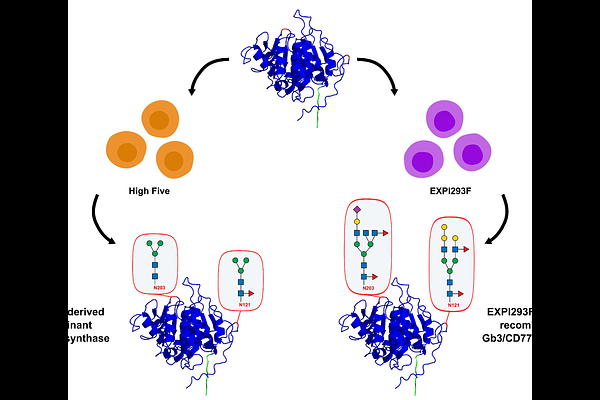Expression of a human Gb3/CD77 synthase in insect and human cells: comparison of activity and glycosylation

Expression of a human Gb3/CD77 synthase in insect and human cells: comparison of activity and glycosylation
Mikolajczyk, K.; Szymczak-Kulus, K.; Bereznicka, A.; Kaczmarek, R.; Sobala, L. F.; Jakubiak-Augustyn, A.; Czerwinski, M.
AbstractGlycosylation of proteins can impact their folding, stability, trafficking and enzymatic activity. Human Gb3/CD77 synthase (1,4-galactosyltransferase, A4galt) has two occupied N-glycosylation sites. Previously, we demonstrated that the activity of recombinant enzyme relies on its N-glycosylation. In this study, we produced soluble recombinant catalytic domain of human Gb3/CD77 synthase in two expression hosts known for different glycosylation pattern: Trichoplusia ni insect cells (High Five) and human embryonic kidney cells (EXPI293F). The High Five cells generate short oligomannose structures, while the EXPI293F cells synthesize complex type glycans. We evaluated the activity of High Five-derived and EXPI293F-derived enzymes, characterized the structures of their N-glycans and showed that High Five cells provide a higher amount and activity of the enzyme. Moreover, we used the EXPI293F cells to evaluate the N- and C-terminal location of the 6xHis-tag and found that only the N-terminally tagged EXPI293F-derived enzyme demonstrated activity. In contrast, the enzyme produced in High Five cells was active despite carrying a C-terminal tag. These findings highlight the role of glycosylation pattern and tag position in the activity of human recombinant glycosyltransferase produced in different hosts.